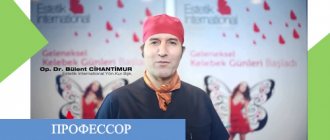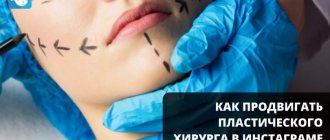Development of plastic surgery in Russia
The situation in the early 1990s looked something like this. It was a fairly large market, with expensive services, completely uncontrolled by anyone. Carcinogenic materials for prosthetics, banned in Canada, the USA, and Western European countries, that do not meet FDA or CE standards, poured into Russia like a river. Today experts say that plastic surgery in Russia is nationally colored and specific. The most popular surgeries include nose reshaping and liposuction.
Plastic surgery has long been no longer perceived as a luxury or: specialized clinics will be opened in all Russian regions in the near future. Plastic surgery specialists say: beauty is not something worth saving on; it’s better to eat less.
Beauty or death: the number of victims of plastic surgery is growing in Russia
There are now several high-profile cases in the news when a trip to a plastic surgeon ended in the death of a patient. The latest tragedy occurred on April 25, when 29-year-old Marina Kushkhova from Kabardino-Balkaria died. After plastic surgery in one of the private Moscow clinics, she was taken to the Sklifosovsky Research Institute. Doctors fought for the girl’s life, but were powerless. The young woman just wanted to correct her nasal septum. The operation, in principle, is not difficult if a professional with the appropriate skills and education takes on the matter. But it also happens that people encounter impostors.
Yes, not everyone is like that. There are many respected specialists in Russia who, through their work, make people more beautiful and happier. But one cannot help but notice something else: reports of death after plastic surgery began to appear more often. How can the desire for beauty lead to the morgue ahead of time and how to avoid this?
The handcuffs clicked on my wrists. The doctors were surrounded by a convoy. Surgeon Viktor Markov is silent all the time, his colleague anesthesiologist Evgeny Yashin touchingly says goodbye to his wife. Two years in a general regime colony for each. And no medical practice.
Furniture is being removed from the Markov Plastic Surgery Center. While the owner is in prison, there is no point in paying rent. The luggage is small - tables, couches and a slow cooker. There has never been any serious medical equipment here.
Ekaterina Klementieva came to this one-story extension six years ago. I dreamed of beautiful breasts. Markov operated, anesthesia was administered by a visiting doctor from the oncology clinic, Yashin. He worked for a fee. After the painkiller injection, the girl felt ill.
“She began to choke and turn blue. Apparently, she began to wake up, they immobilized her, that is, they actually cut her alive,” said the mother of the deceased Ekaterina Klementyeva, Tatyana Verzilova.
This is known for certain today: introductory anesthesia was given only to begin the operation. The clinic did not even have basic equipment to monitor the patient’s condition during surgery. Katya died from painful shock.
The patient's death was initially ruled an accident. The criminal case was closed. The investigation was resumed three years later, when the girl’s mother made incredible efforts to obtain an independent examination. Six years passed from crime to punishment.
Marina had no complaints about her smile. She had a complex because of the bump on the bridge of her nose. Childhood trauma haunted me. She came to the Medlange clinic in the capital for rhinoplasty. They took her from there urgently to the intensive care unit of the Sklifosovsky Research Institute.
12 days between life and death. It got worse every hour. Her last call to her husband is about how her throat hurts. She stopped breathing on her own and was connected to machines. On April 24, Marina’s heart stopped.
This clinic treated everything: teeth, women’s diseases, and even had their face cleaned in the cosmetologist’s office. But the main direction is plastic surgery. Wealthy patients wanted to be beautiful, but sometimes this beauty turned out to be deadly.
Behind the shine of the marble floor and the aroma of fresh roses, the main thing was hidden here: in April alone, six women who had undergone surgery were taken away from this clinic in serious condition. Three of them died in capital hospitals. The head nurse literally walks away from the conversation.
The Investigative Committee came to Medlange with searches when the sixth victim was taken to intensive care. The previous five cases were hushed up by the clinic's management. At the same time, general director Anna Sivakova was engaged in self-promotion.
Sivakova herself had a different rule: as soon as problems arose, she changed the name of the clinic and rented a new room. There were many complaints from Roszdravnadzor. But Anna Yuryevna closed one company and immediately opened another. The scheme is common in this business.
The investigation is considering five versions of the mysterious death of women: from defective drugs to an infection that could have been brought into the operating room. The most likely: the destructive injections could have been administered to patients by a nurse who suffers from mental illness. That is, they hired people literally from the street to work at Medlange. Clients were assured that the staff were medical luminaries.
The office of plastic surgeon Vadim Bakov. Today it is empty. Here Bakov received patients. He examined it, made sketches and sent it to the operating room. On this day, the respected surgeon Bakov - the glory and pride of the private clinic "Medlange" - operated in another similar office on Myasnitskaya. We made an appointment with him over the phone, but were not allowed to see the doctor with a camera. He hid in one of the offices.
The administrator is funny. Those who have lost their loved ones are choked with tears of despair. Alexander and Evgenia Khudakova visit their daughter’s grave every day. No one was punished for her death; two grandchildren were left without a mother. But Katya just wanted to be beautiful.
Triumph Palace was recommended to her by a friend. Expensive. Prestigious. With gloss. Surgeon Grigory Perekrestov scheduled the operation for Sunday at four o'clock in the afternoon. At seven in the evening, doctors pronounced him dead. The young anesthesiologist Zeynal Nejafov - he was a visiting doctor - escaped.
Music plays in the lobby - relaxation. Administrators make appointments for patients - everything is already booked until mid-May. The founder of the clinic, Larisa Karaganova, locked herself in her office. Does not provide comments.
Only now, after the death of the patient, it became clear: the supposedly elite clinic did not have permission to conduct this type of operation. The anesthesiologist comes in, the plastic surgeon drops in from time to time. He is simultaneously registered in three hospitals.
“In our country, it’s very easy to become a plastic surgeon, to declare yourself one. And if you look at the complication rate of plastic surgery, it is enormous. Where it takes a decade to train a doctor, that’s one thing, but where it takes off and lands, he went, opened a clinic, someone invested money in him, that’s completely different,” says Alexander Myasnikov, chief physician of Moscow City Clinical Hospital No. 71.
They save on everything: there is no intensive care unit, no hospital, visiting doctors, cramped rooms, primitive equipment. This shouldn't happen.
The oldest Institute of Plastic Surgery and Cosmetology. There are seven sterile operating rooms here. Resuscitation. 24-hour hospital. And doctors on duty are with patients 24 hours a day.
“Because this is surgery. A reaction can occur even to the most banal procedure. There may be an allergic reaction that will end in anaphylactic shock,” noted Yuri Grib, chief physician of the Institute of Plastic Surgery and Cosmetology.
Today in Moscow there are one and a half hundred plastic surgery clinics. For small private owners, the interior and repairs are much more important. They like to rent offices in the historical center of Moscow, decorate the entrance with expensive signs, and maintain security. They were forced to undergo licensing, but even here they resort to tricks.
“The game with licenses, when there is a license for outpatient care and no license for inpatient care. This is misleading and convincing patients that there is a license, we will do a nose job or insert a breast implant on an outpatient basis, we will observe, we will send you home,” explained Andrei Plutnitsky, head of the territorial body of Roszdravnadzor for Moscow and the Moscow region.
Hence the sad statistics and new fatal cases. Only rarely do the perpetrators reach trial. The verdict against Magnitogorsk doctors is rather an exception.
Investment in beauty
It is curious that the financial crisis did not hit the plastic surgery market in Russia that hard. There were few clients who were willing to afford an expensive operation, even during times of economic growth. Financial difficulties drove only middle-class consumers out of clinics. A considerable number of Russians are willing to spend from 40 to 50 thousand rubles a month on beauty salon services and incur additional costs for operations.
“You have decided on an expensive operation, but you can count on the effect that will last for a long time. We also buy a good car with the hope that we will drive it for a sufficient number of years,” comment the cosmetologists.
Advantages and disadvantages
“After the new rules come into force, some clinics will have to close. But I think this is rather a positive trend, because not the strongest specialists will leave,” says Maria Volokh. — There are proposals to separate simple operations into a separate category and impose less stringent requirements for their implementation. But I cannot support them, because any, even minimally invasive, operation may require more complex surgical intervention, and it is necessary to ensure the possibility of its implementation.”
Market participants, listing the advantages of innovations, indicate that now they have criteria for each medical profile: what a given specialist can do, what is included in his powers, what is not included, what his level of education should be. The need for separate payment for overtime is clearly stated. And the performance of duties that are not within the competence of a doctor can be challenged in court.
However, new requirements for the equipment of clinics and the qualifications of specialists raise much more questions. However, they generally do not concern the plastic surgery departments themselves. Only the requirements for the organizations in which they are located have changed. Now, in fact, these should be full-fledged medical centers with expensive equipment and full-time specialists in various fields.
“In my opinion, these requirements are excessive. There is no need to buy a mammograph for plastic surgery,” comments Sergei Lazarev, a member of the public council under the Ministry of Health of the Russian Federation. The same applies to the need for round-the-clock intensive care.
“We already have a shortage of resuscitators. And the minimum that can happen is that the execution of the order will simply become a fiction. They practically banned outpatient work. The only thing that is allowed is reception and dressing,” Sergei Lazarev is indignant.
The expert notes that it is now unclear which manipulations can be carried out on an outpatient basis, which can be carried out in an inpatient setting, and which ones can be carried out in a day hospital. Another problem: the issues of reconstructive plastic surgery (RPS) and aesthetic ones are not separated. In fact, it is not clear whether it will now be possible to remove a wart not in a full-fledged clinic with a mammograph and an anesthesiologist, but in a beauty salon.
In addition, the idea of introducing plastic surgery into compulsory medical insurance is being actively discussed, but there are nuances here. The state guarantee program includes 83 types of RPO, which are already being carried out as part of high-tech medical care. But most of them concern not the appearance of patients, but the reconstruction of internal organs. Operations to eliminate external defects, for example after severe burns, are also provided for in the compulsory medical insurance system.
Sergey Lazarev draws attention to the fact that they are essentially the same plastic surgeons doing them. Drawing the line between plastic surgery as understood by ordinary people and RPO, as doctors and medical administrators see them, is sometimes difficult, and perhaps it still makes sense to separate aesthetic medicine from plastic medicine.
Financial issue
The price of an operation in plastic surgery, as a rule, is formed on the basis of three main items - the cost of the surgeon’s work (the operation itself), the cost of a hospital stay, and the cost of anesthesia.
Average cost of plastic surgery:
- abdominoplasty will be performed for 115 thousand rubles;
- blepharoplasty (eyelid surgery) – for 44 thousand rubles;
- aginoplasty – for 75 thousand rubles;
- hymenoplasty (with restoration of virginity) – for 30 thousand rubles;
- labiaplasty (with labiaplasty) - 37 thousand rubles;
- liposuction (tumescent, 4 zones) – for 58 thousand rubles;
- breast lift – for 113 thousand rubles;
- face lift (circular, 3 zones) – for 135 thousand rubles;
- rhinoplasty - for 100 thousand rubles;
- breast augmentation (with the installation of an anatomical implant) – for 147 thousand rubles;
- breast augmentation (with the installation of a round implant) – for 132 thousand rubles;
- breast reduction – for 118 thousand rubles;
- otoplasty (with elimination of protruding ears) – for 35 thousand rubles.
World statistics: income of plastic surgeons and the most popular plastic surgeries
September 10, 2010
Over the course of a year, specialists from the International Society of Aesthetic and Plastic Surgery (ISAPS) collected and analyzed data from the 25 largest countries that occupy leading positions in plastic surgery. In 2009, they accounted for 75% of aesthetic surgeries performed. In the list of “plastic countries,” Russia took tenth position, located between Italy and Turkey.
The study reflects all trends characteristic of aesthetic medicine. Thus, most patients set their priorities in favor of liposuction, relegating breast correction operations to the background. In other words, the number of operations performed per year to remove excess fat exceeds the number of surgical interventions aimed at changing the shape and size of the breast. This can be explained by the fact that the number of men wanting to pump out fat from problem areas has increased.
TOP plastic surgeries
Researchers who analyzed the plastic surgery market compiled the Top operations. According to these data, the percentage of liposuctions performed in 2009 was 18.8%, the share of breast correction operations was 17%, blepharoplasty (eyelid surgery) - 13.5%, rhinoplasty (nose surgery) - 9.4%, abdominoplasty (plasty abdomen) - 7.3%.
Unfortunately, the study does not reflect global dynamics. However, the ISAPS report presents the results of a study of the American plastic surgery market. According to these data, during the crisis, the turnover of medical companies specializing in providing services in the field of plastic surgery decreased by 1.2 times. These figures seem deplorable against the backdrop of growing turnover in Russian plastic surgery clinics. If this trend continues, it is likely that in a few years Russia will lead the ranking of countries in terms of the number of plastic surgeries performed per year.
So far, according to ISAPS, Russian surgeons performed 345,920 aesthetic surgeries in 2009, of which 162,060 were plastic surgeries, 183,860 were cosmetic procedures. During the same period, 3,031,146 operations were performed in the United States (1,303,932 plastic and 1,727,214 cosmetic procedures). Following the USA are Brazil, China, Mexico, India and Japan.
Geography of plastic surgery distribution
In their study, experts also touched upon the geography of distribution of the most popular plastic surgeries. It turned out that in the USA, Brazil, Mexico and China, patients prefer non-surgical methods of correction; patients from Japan, Hungary, South Korea, India and Germany give preference to more radical surgical interventions.
China ranks first in the number of augmentation mammoplasties performed (222,530 operations in 2009) and blepharoplasty (eyelid surgery) - 175,228. These areas are popular in India, Japan and South Korea. The incredible desire of Brazilian women to have clear contours of the figure has propelled the country to the first place in liposuction. This operation, as we have already said, remains the most popular not only in Brazil, but also in other countries, including Russia. In 2009, domestic specialists performed 31,137 operations.
Russian specialists are extremely surprised that liposuction ranks first in the country in terms of the number of surgical interventions performed in 2009. According to leading plastic surgeons in the capital, it would be more correct to give the leading position to breast augmentation and blepharoplasty.
Russia is a huge territorial space. In this case, everything cannot be summed up under one line. In the Far East, where a very large percentage of people from Asian countries live, ethnic blepharoplasty is especially popular; in the South of Russia, where representatives of the Caucasian peoples are concentrated, rhinoplasty (nose surgery) is in demand.
As for gender and age indicators, ISAPS specialists provide the following data: about 85-90% of plastic surgeons’ patients are women aged 18-29 years, the age of 38% of patients ranges from 30 to 49 years, 36% of women are operated on at the age of 50 years.
There are 515 recognized plastic surgeons in Russia
A study by the International Society of Aesthetic and Plastic Surgery provides information on the level of services provided in the field of aesthetic medicine. The analysis of this position was based on the number of recognized specialists who confirmed their professionalism. All members of the Society of Plastic, Reconstructive and Aesthetic Surgeons (Society of Plastic, Reconstructive and Aesthetic Surgeons) are included in this category in Russia.
According to ISAPS, there are just over 30,000 recognized authorities worldwide, of which 5,700 are American, 4,250 Chinese and 3,824 Brazilian. Russia ranks 12th, with more than 515 plastic surgeons practicing here. This is 1.7% of the global number of plastic surgeons.
How much do Russian plastic surgeons earn?
Every year, not only the total number of plastic surgeons operating, but also their earnings are growing. Today, domestic specialists receive ten times less than their foreign colleagues. Of course, a plastic surgeon’s earnings depend on his place of work, qualifications and PR managers working for him.
It is known that the annual salary of the average European plastic surgeon is $200,000 - 250,000. The income of specialists from Japan and Australia is about $750,000. The richest plastic surgeons live in the USA, where they earn about $2,000,000 a year. Russian specialists are content with annual earnings ranging from $30,000 to $200,000. This is understandable; the cost of plastic surgery in Russia is much lower than in other countries. For example, abdominoplasty will cost a Russian patient $1.5 - 5,000, the cost of abdominoplasty in China is about $4,000, in the USA - up to $10,000.
PR is their daily bread
What prevents domestic plastic surgeons from increasing their income level? Many factors. First of all, the welfare of patients. The number of solvent women and men willing to pay for a surgeon’s work is not so large. Few people can afford plastic surgery; the rest can only dream. Another factor hindering an increase in earnings is the low level of awareness among the population regarding the possibilities of modern plastic surgery. Someone has money for surgery, but he is simply afraid to afford such an exotic procedure. In the USA and other European countries, the media promote plastic surgery, but in our country they are trying to put a taboo on it.
And, perhaps, the main reason for the failures is the illiterate policy of promotion in the medical services market. Many plastic surgeons are far from the realities of information technology and have no idea how to present themselves correctly or, if you like, sell themselves, sell their image. It’s not for nothing that they say: first you work for your name, then the name works for you!
Non-surgical procedures
- Botox (injections, 1 unit) RUB 320;
- Restylane (injections, 1 ml) 3 thousand rubles;
- laser hair removal (1 zone) 2.4 thousand rubles;
- hair transplant (1 graft) RUB 110;
- chemical peeling (1 zone) 2.2 thousand rubles.
When agreeing on the price of plastic surgery, do not forget to clarify whether the price of anesthesia and hospital stay is included in the stated price. Is it possible to pay for the operation in installments or on credit? Is it possible to reduce the price of the operation and under what conditions?
Elena Svet-doctor
Made it beautiful
These are the results of a study conducted by the Vademecum think tank.
In total, 153.7 thousand aesthetic surgeries were performed in Russia last year. The top three were headed by blepharoplasty (operations to change the shape of the eyelids and the shape of the eyes). It was done by every fifth Russian who decided to go under the knife of a plastic surgeon (22 percent or 33.5 thousand operations). As experts note, a year earlier this type of operation ranked first in popularity in only a few regions. And the leadership was given to breast surgery, which has now moved to second place in demand (18 percent), although the number of such operations has increased over the year. If in 2015 26.2 thousand Russian women had their breasts enlarged, then in 2016 there were already 28 thousand.
Most often, Russians sought to improve the shape of their eyelids, chest, nose and tighten their facial contours
Third place went to facelift. 11 percent of beauty lovers did it. And the fourth is rhinoplasty or changing the shape of the nose (nine percent, although a year earlier there were 14 percent).
The fact is that surgical operations for a facelift or nose correction have been overtaken by modern methods of correction “without a knife.” Thus, the nose can now be improved with the help of fillers (special injections), according to Vademecum experts. And the oval of the face through minimally invasive cosmetic techniques. By the way, the market for the latter is an order of magnitude larger than for aesthetic surgery. Over the past year, Russians left more than one hundred billion rubles on it (almost 10 times more than they gave to plastic surgeons). Accordingly, 12 million cosmetic injection procedures were performed with this money.
1.5 thousand aesthetic surgeons work in Russia
In total, about 1.5 thousand aesthetic surgeons worked in Russia last year. Most of them are practiced in the Central Federal District. It accounts for 657 plastic surgeons. This is followed by the North-Western District with 209 specialists and the Volga District with 196 doctors “for beauty”. And according to the international Internet service for searching and organizing treatment MEDIGO, Russia is among the top ten world leaders in the number of plastic surgeons. We occupy seventh place in this ranking. Ahead of us are the USA, Brazil, India, China, Japan, South Korea.
A third of the operations (36.5 percent) were performed in Moscow. And breast augmentation operations were the most popular among girls in the capital.
However, according to experts, Muscovites do not always undergo surgery in their hometown. One of the latest trends is that they go to neighboring regions to correct their face and body, for example, Tula, Yaroslavl, Tver, Vladimir. Many operations there cost one and a half, or even two times cheaper. At the same time, most regional doctors studied their profession in the capitals - Moscow or St. Petersburg, and therefore they are highly qualified, some have international diplomas. And you can only get under the knife with them after standing in line for several months.
As experts note, in recent years plastic surgery has been affected by the crisis. For example, in 2020, in physical terms, the turnover of the plastic industry increased by six percent, in monetary terms - by four percent, although in 2014 the “natural” growth was 24 percent, and financial - 15 percent. “Last year brought a minus to the industry. The decrease in physical terms was two percent. In monetary terms - four percent. However, experts do not expect a further significant drop in the market. And this is explained by several factors. First, many patients consider investing in aesthetic surgery as a way to save money. Secondly, a noticeably changed exchange rate raised a wave of medical tourism from Europe. In particular, an increase in the number of patients from abroad was noted by surgeons specializing in rhinoplasty, according to Vademecum. Additionally, demand is fueled by the marketing activity of clinics and surgeons - price containment, various discounts and promotions, experts add.
Result on the face
The three most popular were breast augmentation (17 percent of the total number of aesthetic interventions), blepharoplasty or upper and lower eyelid lift (16 percent) and rhinoplasty, nose reshaping (14 percent).
In total, over the past year, more than 156.6 thousand aesthetic operations were performed in Russia, according to a new study by the Vademecum analytical center.
A fashionable trend in plastic surgery is lipofilling, or the transplantation of the patient’s own fat tissue from one area to another. If previously such correction accompanied interventions mainly on the face, now lipofilling is increasingly popular for operations on the lower leg, buttocks and mammoplasty.
Another trend is the removal of Bisha's lumps, fatty formations located between the cheek muscle and the superficial muscles of the face. This operation speaks of the fashion for narrow and thin faces. Such interventions are especially in demand among a young audience of patients—women under 30 years of age.
Some of the most popular surgeries include breast augmentation, upper and lower eyelid lifts, and nose reshaping.
Analysts attribute this increase in cash turnover in this business to several factors. The first is the growing desire of Russians to invest in themselves, the second is the increasing influx of foreign patients, essentially medical tourists.
The third is the flexible pricing policy of plastic surgery clinics. “To retain the interest of patients, clinics offer promotions and discounts, thus reducing prices by more than 20 percent of the cost of operations,” says Olga Goncharova, head of the analytical center.
Another reason for the growth of the market was the influx of patients into plastic surgery who previously preferred minimally invasive cosmetic techniques. For example, the share of facelifts in the total number of interventions has increased nationwide from 11 to 13 percent.
But if in the capital the demand for beauty is still growing, in the regions surgeons clearly speak about its decline, notes Goncharova. At the same time, breast augmentation operations continue to confidently lead among capital patients. In cities with a population of less than a million people, this operation is being replaced by less expensive blepharoplasty.
By the way, in Moscow at the time of the study there were 159 clinics and departments of multidisciplinary centers licensed by Roszdravnadzor in the field of plastic surgery. In total, they performed about 53 thousand operations per year. This is followed by St. Petersburg with 53 clinics that performed 20.6 thousand operations, and the Sverdlovsk region - 13 clinics and 8.8 thousand aesthetic operations.
An interesting fact is that 76 percent of the total number of aesthetic surgeries are performed in private clinics, and 24 percent in departments of public medical institutions. Of the total number of clinics practicing aesthetic plastic surgery, departments of state medical centers occupy 33 percent.
At the same time, specialists involved in different operating sites work part-time.
ruPlastika portal about plastic surgery and cosmetology
Home / Articles
Over the past 10 years, the number of plastic surgeries in Russia has increased by orders of magnitude. Nobody keeps statistics, and even wives hide the fact of the operation from their husbands, but it’s enough to look around to catch the trend. According to the meager, but unique data of a recent study by Levada Center, the majority of Russian residents have a “rather positive” attitude towards plastic surgery. But to the question “Have you had plastic surgery on yourself?” 69.4% of respondents said it was completely out of the question, 5.9% were “very likely to have surgery in the future,” and only 0.2% answered “yes.”
For any operation in any private or public clinic, a statistical form must be filled out, indicating the diagnosis, type of operation and its outcome. The coupon, developed in the 30s of the last century, describes the outcomes somewhat simplified - “recovery”, “death”, etc. These coupons go to the Ministry of Health. Maybe, if it wanted, the ministry could count the number of remade noses and enlarged breasts. But there are no statistics: the Ministry of Health has more important things to do than counting excess fat in the pelvic area.
Forbes asked five Russian specialists in the field of plastic surgery to name the most popular operations based on their personal experience. Based on the survey results, we compiled a small rating. Experts said that 99% of their clients are women, so our list includes operations that are popular among them. Men go under the knife of a plastic surgeon extremely rarely. And yet, it is they who give impetus to the development of the industry: experts are sure that, first of all, women are driven to plastic surgery by the most common desire to please the opposite sex.
Most popular operations
1. Nose surgery. Nose surgery, or rhinoplasty, is an operation to improve the shape of the nose, change its size, correct birth defects and breathing problems. “Rhinoplasty is the most difficult operation,” says plastic surgeon Sergei Levin. — The more experienced the surgeon, the more nasal surgeries he performs. I specialize in noses. The point is that if you do it wrong, it will show. And if you then redo it many times, the skin dies, like Michael Jackson.”
Who does it : women from 20 to 40 years old. “Nose surgeries are mostly performed by young girls,” comments cosmetic surgeon Victoria Alekseeva. “If a woman has lived with her nose for 40 years, she is unlikely to redo it.” “The human nose is a weak point,” says Professor Leonid Pavlyuchenko. — At the age of 14-18, when the nose is formed, a person may develop a cosmetic defect and, as a result, a psychological complex. And by the age of 18, a patient comes to us with a request to correct his shape.”
Rehabilitation period: after a week, the nose takes on its correct appearance. Puffiness and bruising under the eyes can last from two weeks to a month. Most patients return to work 10 days after surgery. “When we remove the plaster, the patient experiences slight swelling and bruising, but the final result takes about six months to form. There should be no negative consequences at all, but everything depends on the hands of the surgeon. During initial consultations, it is necessary to carefully select patients, taking into account the initial condition of the tissues and the shape of the nose. According to statistics, 2-3% of patients come with inflated, inadequate wishes. Sometimes they show the desired nose shape in a photograph, and I understand that this is impossible. We have to convince them that this won’t work, because after the operation the person will still want a nose like the one in the photo and will ask for a repeat operation,” says Dr. Andrei Lelikov.
Problems: rejection of the new nose, desire to redo it again.
Price: from 90,000 rubles.
2. Breast correction Breast augmentation occurs due to implants - depending on the shape of the breast and the desired result, they are placed under the mammary gland or under the pectoral muscle. The incision can be located in the armpit, along the edge of the areola, under the mammary gland along its natural fold. To reduce the breast, the surgeon removes excess fat, tissue of the gland itself, skin through incisions and moves the nipple and areola to a different position, forming a new breast contour. Breast lift surgery restores breast height and improves contour. “Any surgeon can do breast surgery, it’s simple,” Sergei Levin is convinced. - I mean, it’s easy to do without complications. But beautiful, of course, is difficult.”
“An implant is a foreign body, just like a person, it changes with age,” says Dr. Levine. — Over the years, the implant will look ugly, so you have to make it larger or change its shape. It is impossible to fix the beauty of a breast once with an implant.” Once inserted, the implant can last up to 15 years.
Who does it: breast augmentation plastic surgery today is performed by women from 20 to 40 years old (after 40, breast lift and shape correction are more likely to be required). “Previously, about 15 years ago, patients had small implants installed so that it would not be very noticeable that plastic surgery had been performed,” says Andrei Lelikov. - Now, on the contrary, most women want to have large breasts, so that they can be seen, for prestige. However, in any case, we must not forget about body proportions and aesthetics.”
“Today, in order for a woman to get married successfully, she needs to attract a man, including with her bust,” says professor Leonid Pavlyuchenko. - This forces women to undergo operations to be more attractive and sexy. There is another group of patients - those who correct their breasts after childbirth. Feeding leads to deformation of the mammary glands. But a woman wants to be beautiful even after giving birth.”
Rehabilitation period: you can return to work within a week after the operation. However, in the first days your chest will hurt because the muscles are stretched.
Complications: If you follow precise instructions, the risk of complications is minimal. But they are possible - subcutaneous hematomas, inflammation of soft tissues, scars. When it comes to horror stories about botched surgeries and failed attempts to fix things, experts say it's a myth. “I won’t hide it,” admits Andrei Lelikov, “I redo something of my own, but extremely rarely, it’s more of a finishing touch. Human psychology is such that failure is always brought to justice, but successes are somehow kept silent. Plastic surgery is a common operation, it just needs to be done in trusted places and with trusted surgeons.” “I never redo anything, and very rarely do people come to me with this,” says Levin. “Good surgeons always succeed.” Some failures are associated solely with the negligence of doctors. Much also depends on the surgeon’s taste—how he feels about proportions. He can have all the certificates, go through all the training, but he won’t have that feeling. It can’t be taught, just like business.”
Price: from 160,000 rubles.
3. Facelift During a facelift, the doctor removes wrinkles, nasolabial folds, sagging skin, second and third chins and other signs of aging by removing fatty tissue, tightening muscles and redistributing the skin of the face and neck with excision of its excess.
Who does it: women over 40.
Rehabilitation period: “If the patient decides to have a facelift, she needs to take three to four weeks off,” says Dr. Andrey Lelikov. — The greater the volume and depth of the lift, the longer the rehabilitation. I pay special attention to the location of the cuts - I try to hide all the seams as much as possible. If the operation is performed correctly, you can ultimately get an excellent anti-aging result.”
Complications : the most common complications are temporary hair loss around skin incisions in the scalp, swelling and bruising, skin pigmentation. All this disappears within six months after the operation. “Many women are now asking for peeling - a rejuvenating procedure without surgical intervention,” says Georgy Sulamanidze. “I understand them; I want to avoid unpleasant consequences.” In addition, I know women who today regret that they had a circular facelift too early: their facial expressions become unnatural over the years, and their faces become puffy, they want to have a second operation, but it will not help; it is undesirable to undergo facial plastic surgery often.” “It all depends on the surgeon’s technique and the patient’s characteristics,” says Victoria Alekseeva. — It is difficult, for example, to make a European one out of a Mongoloid face. Again, 5% of the population is prone to scarring. Even if the surgeon did everything perfectly, after the operation a person can get a rough scar.”
Price: from 120,000 rubles.
4. Eyelid lift Blepharoplasty (from the Greek blepharon - eyelid) eliminates drooping eyelids and bags under the eyes by removing excess skin or fat deposits.
Who does it: women over 35 years old. “The eye circumference is the part of the face that ages first,” says professor Leonid Pavlyuchenko. “That’s why after 35 women resort to blepharoplasty.” An eyelid lift is often done in parallel with a facelift.
Rehabilitation period: 5-10 days, sometimes bruises in the area of intervention can last up to two weeks.
Complications: Surgeons consider eyelid surgery to be a fairly simple and common operation without any particular complications.
Price: from 50,000 rubles.
5. Liposuction Liposuction is a method of correcting body contours by removing excess fat in problem areas: the stomach, sides of the back, outer and inner thighs, knees, sides, neck, cheeks, upper arms, buttocks, calves. There are many different methods of “suctioning” fat, but they have one thing in common: excess fat tissue is removed through a special tube that is placed in the subcutaneous space.
“Liposuction is the simplest operation. 20 years ago, when I started, that’s all I did. All novice surgeons love this operation,” says Sergei Levin. “If you carry it out unsuccessfully, you still won’t be able to see it under your clothes.” However, today liposuction is rapidly losing popularity. “More effective methods have appeared: all kinds of currents, mesotherapy, hardware massages, plus special diets and intragastric balloons,” says Victoria Alekseeva.
Who does it: women from 25 to 45 years old. “The popularity of liposuction suggests that people are lazy,” says Leonid Pavlyuchenko, “they don’t exercise, they overeat. But there is another category of patients - they are disciplined, take care of themselves, eat right, play sports, but due to their individual physiology, they have excess fat deposits in certain places (knees, riding breeches, subchin area). Liposuction helps them too.”
Rehabilitation period: usually three to four days after surgery, patients can return to normal life. It is important to wear compression garments for another month and follow the surgeon’s instructions. Changes in body contour will become noticeable after two weeks. The final result will be visible only after six months.
Complications: the percentage of complications is minimal. Some patients may experience swelling of the soft tissues in the surgical area (in 1.4% of cases), pain during movement, subcutaneous hematomas (1.6%), painful sensitivity in the surgical area (2.6%), which persist for up to two or three days. weeks “Of course, there is a risk of complications,” says Andrei Lelikov. — The larger the liposuction surface, the higher the risk of complications. From the outside it seems like one puncture and that’s it. And inside, under the skin, there is a huge traumatized surface. For example, thromboembolism may occur (blockage of a blood vessel with a blood clot that has broken away from the site of its formation and entered the bloodstream. - Forbes).”
Price : from 50,000 rubles.
6. Tummy Tuck Abdominoplasty is a surgery in which the muscle is cut from hip to hip, approximately along the line where pubic hair begins to grow. Through an incision, the surgeon removes excess skin, fat and muscle tissue. The operation is performed under general anesthesia; the length of the incision depends on the amount of skin and fat removed.
Who does it: women from 25 to 50, most often after sudden weight loss or childbirth, when there are stretch marks or extensive post-operative scars. “A tummy tuck is a very convenient replacement for fitness,” says Dr. Lelikov. “The operation is not simple, but quite common: the so-called skin-fat apron is removed, the stomach becomes flat, and the seam is hidden under the underwear.” Some patients undergo abdominoplasty only, while others combine it with liposuction. “It all depends on the skill of the surgeon,” says Levin. — For example, I usually combine abdominal correction and liposuction. A surgeon must be an artist and have an innate aesthetic taste.”
Rehabilitation period: after the operation, the patient spends a couple of days in the hospital. On the first day, he is injected with an anesthetic; during the first two days, drainage is done so that tissue fluid and blood do not accumulate under the skin. The patient will have to wear compression garments for another month and avoid physical activity. This is where the inconvenience usually ends.
Complications: “Hematomas, inflammation and suppuration,” says Andrey Lelikov, “more often occur if the patient behaves incorrectly after the operation: does not wear special underwear, does not keep rest. Over time, the seams become less noticeable. In general, unnoticeable stitches are the calling card of a good plastic surgeon.”
Price: from 90,000 rubles.
Published: November 30, 2009







